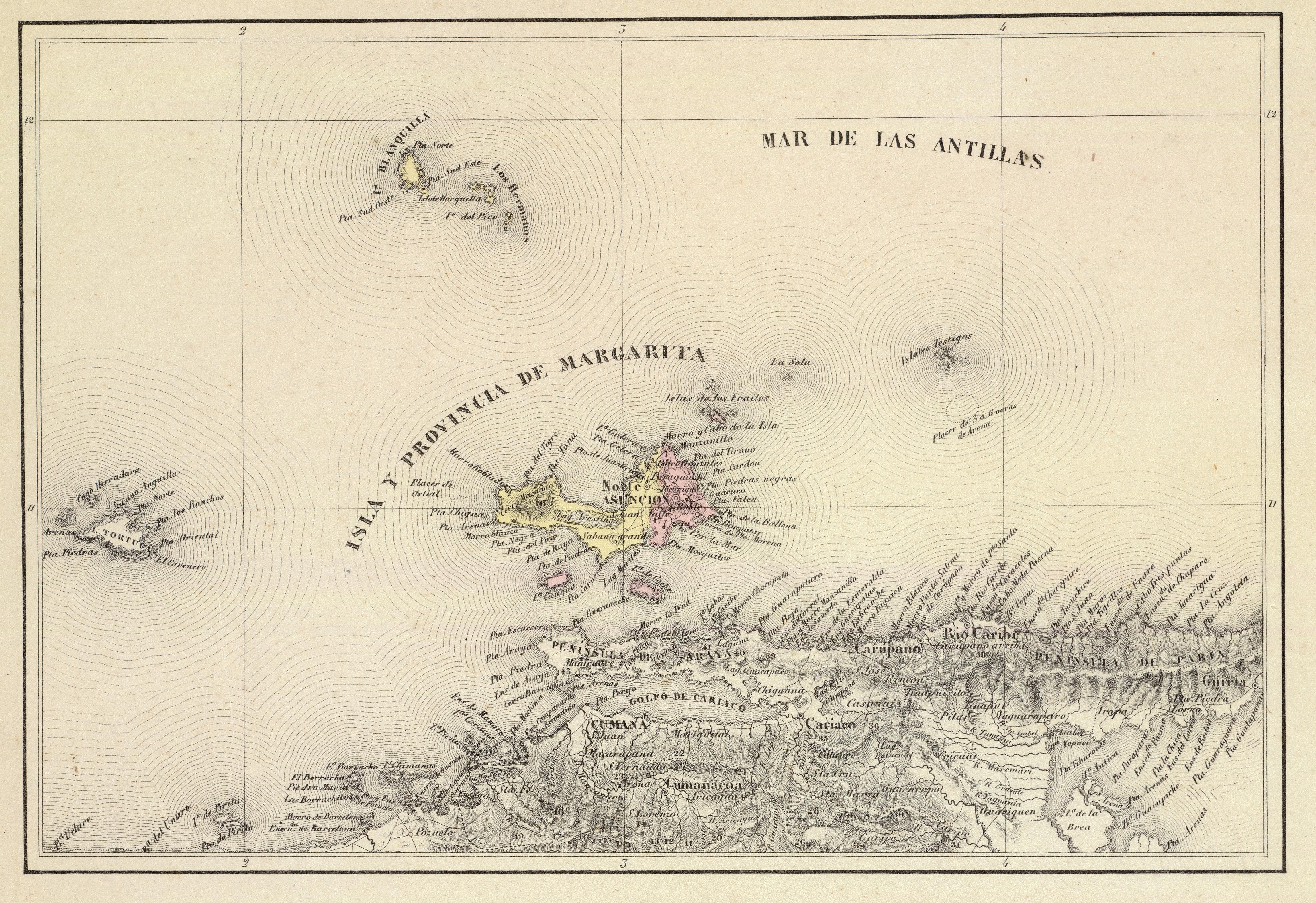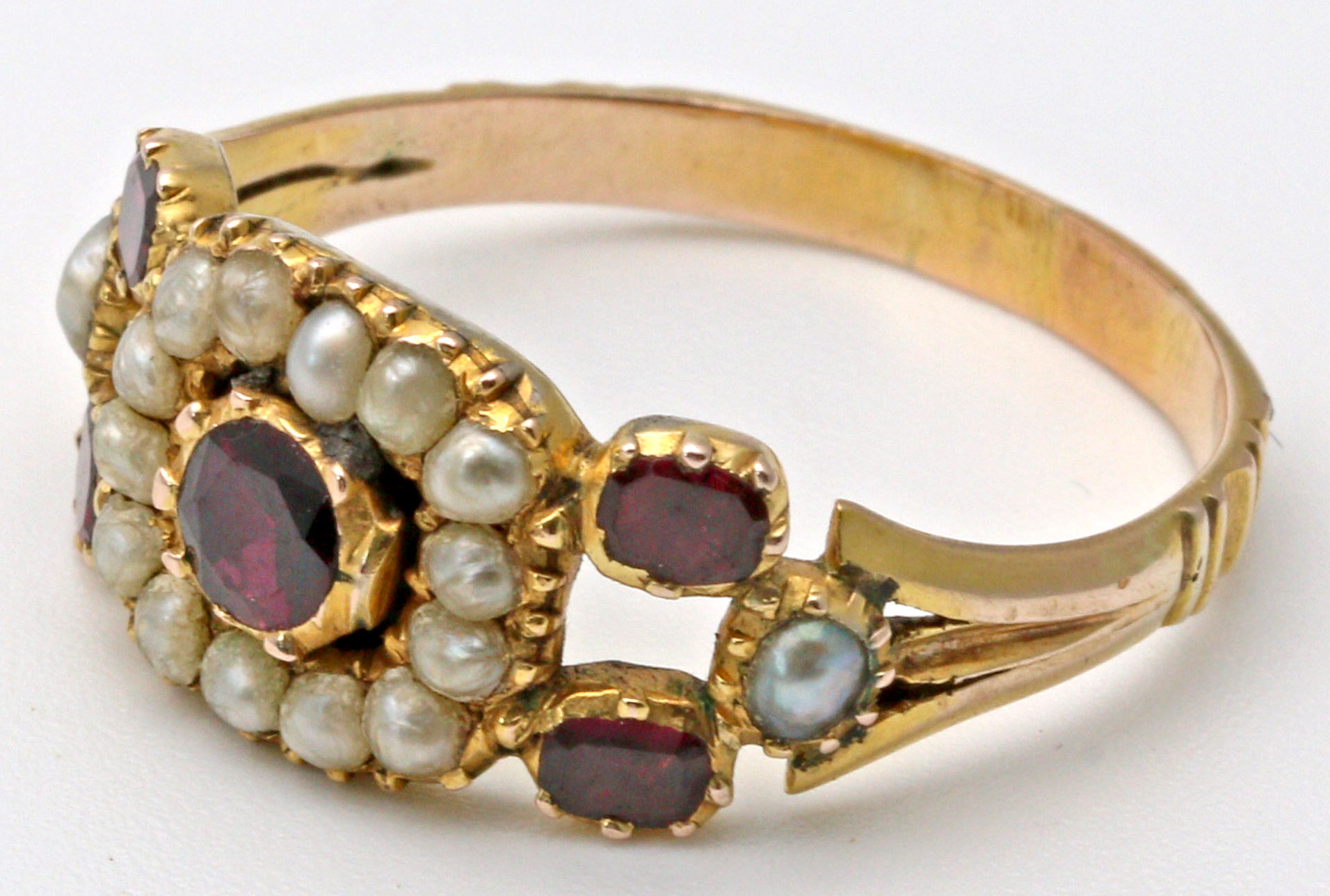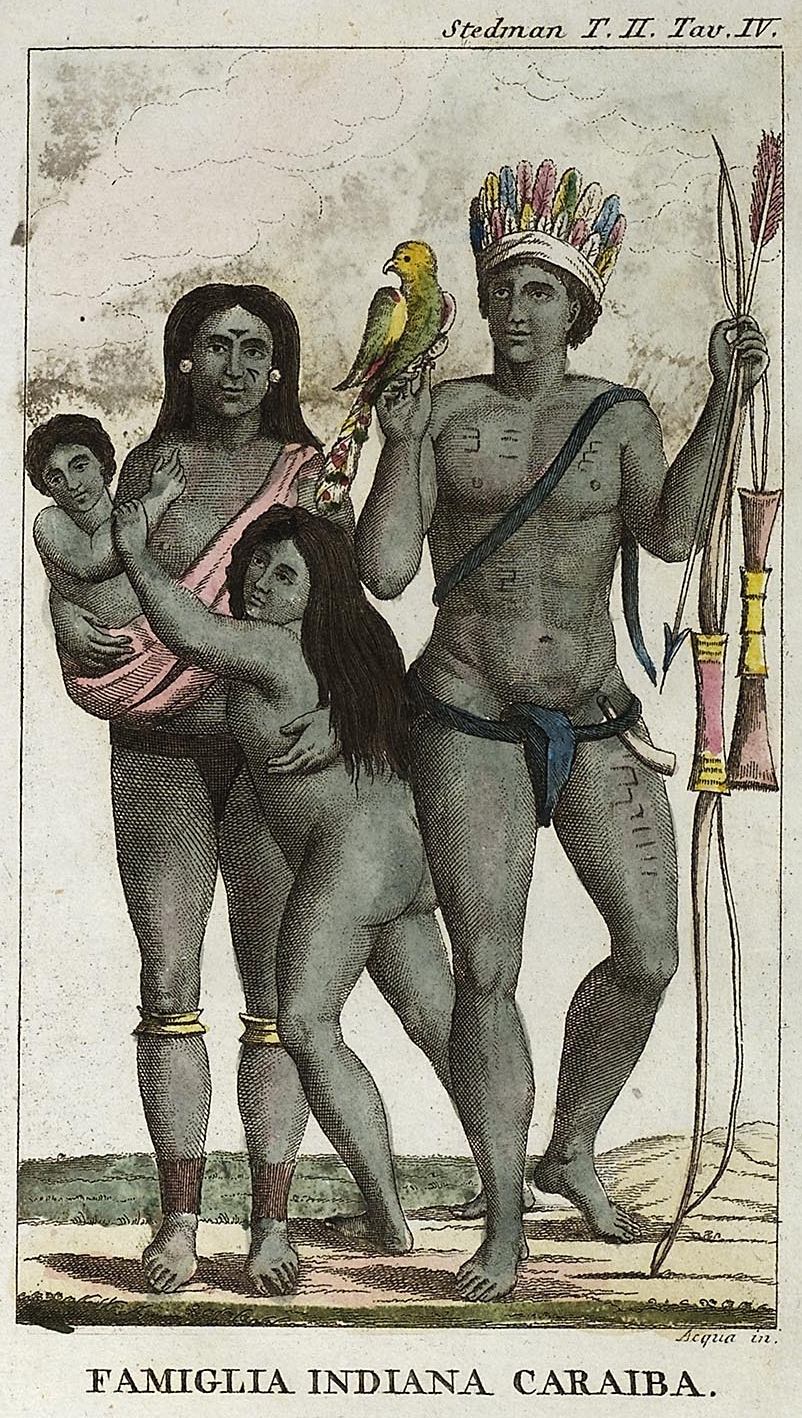|
History Of Trinidad And Tobago
The history of Trinidad and Tobago begins with the settlements of the islands by Indigenous First Peoples. Trinidad was visited by Christopher Columbus on his third voyage in 1498, (he never landed in Tobago), and claimed in the name of Spain. Trinidad was administered by Spanish hands until 1797, but it was largely settled by French colonists. Tobago changed hands between the British, French, Dutch, and Courlanders, but eventually ended up in British hands following the second Treaty of Paris (1814). In 1889, the two islands were incorporated into a single political entity. Trinidad and Tobago obtained its independence from the British Empire in 1962 and became a republic in 1976. Pre-Columbian period Human settlement in Trinidad dates back at least 7,000 years. The earliest settlers, termed Archaic or Ortoiroid, are believed to have settled Trinidad and Tobago from modern-day Venezuela from northeastern South America around 4000 BC. Twenty-nine Archaic sites have been ... [...More Info...] [...Related Items...] OR: [Wikipedia] [Google] [Baidu] |
Indigenous Peoples
There is no generally accepted definition of Indigenous peoples, although in the 21st century the focus has been on self-identification, cultural difference from other groups in a state, a special relationship with their traditional territory, and an experience of subjugation and discrimination under a dominant cultural model. Estimates of the population of Indigenous peoples range from 250 million to 600 million. There are some 5,000 distinct Indigenous peoples spread across every inhabited climate zone and inhabited continent of the world. Most Indigenous peoples are in a minority in the state or traditional territory they inhabit and have experienced domination by other groups, especially non-Indigenous peoples. Although many Indigenous peoples have experienced colonization by settlers from European nations, Indigenous identity is not determined by Western colonization. The rights of Indigenous peoples are outlined in national legislation, treaties and international law ... [...More Info...] [...Related Items...] OR: [Wikipedia] [Google] [Baidu] |
Venezuela
Venezuela, officially the Bolivarian Republic of Venezuela, is a country on the northern coast of South America, consisting of a continental landmass and many Federal Dependencies of Venezuela, islands and islets in the Caribbean Sea. It comprises an area of , and its population was estimated at 29 million in 2022. The capital and largest urban agglomeration is the city of Caracas. The continental territory is bordered on the north by the Caribbean Sea and the Atlantic Ocean, on the west by Colombia, Brazil on the south, Trinidad and Tobago to the north-east and on the east by Guyana. Venezuela is a presidential republic consisting of States of Venezuela, 23 states, the Venezuelan Capital District, Capital District and Federal Dependencies of Venezuela, federal dependencies covering Venezuela's offshore islands. Venezuela is among the most urbanized countries in Latin America; the vast majority of Venezuelans live in the cities of the north and in the capital. The territory o ... [...More Info...] [...Related Items...] OR: [Wikipedia] [Google] [Baidu] |
Isla Margarita
Margarita Island (, ) is the largest island in the Venezuelan state of Nueva Esparta, situated off the north west coast of the country, in the Caribbean Sea. The capital city of Nueva Esparta, La Asunción, is located on the island. History Age of Exploration Christopher Columbus was the first European to arrive on Margarita Island in 1498. The local natives were the Guaiqueries people. The coast of the island was abundant in pearls, which represented almost a third of all New World tribute to the Spanish Crown. Margarita Island was fortified against the increasing threat of pirate attacks, and some fortifications remain today. It was the center of Spanish colonial Margarita Province, established in 1525. In 1561, the island was seized by Lope de Aguirre, a notoriously violent and rebellious conquistador who killed the governor Juan Villadrando. Around 1675, the island was captured again, this time by Red Legs Greaves, a pirate known for his humanity and morality. He ... [...More Info...] [...Related Items...] OR: [Wikipedia] [Google] [Baidu] |
Pearl
A pearl is a hard, glistening object produced within the soft tissue (specifically the mantle (mollusc), mantle) of a living Exoskeleton, shelled mollusk or another animal, such as fossil conulariids. Just like the shell of a mollusk, a pearl is composed of calcium carbonate (mainly aragonite or a mixture of aragonite and calcite) in minute crystalline form, which has deposited in concentric layers. More commercially valuable pearls are perfectly round and smooth, but many other shapes, known as baroque pearls, can occur. The finest quality of natural pearls have been highly valued as gemstones and objects of beauty for many centuries. Because of this, ''pearl'' has become a metaphor for something rare, fine, admirable, and valuable. The most valuable pearls occur spontaneously in the wild but are extremely rare. These wild pearls are referred to as ''natural'' pearls. ''Cultured'' or ''farmed'' pearls from Pinctada, pearl oysters and freshwater mussels make up the majority o ... [...More Info...] [...Related Items...] OR: [Wikipedia] [Google] [Baidu] |
Bocas Del Dragon
Bocas del Toro (), also known colloquially as Bocas Town, is the capital of the Panamanian province of Bocas del Toro and the district of Bocas del Toro. It is a town and a tourist resort located on the southern tip of Colón Island in the Bocas del Toro Archipelago in the Caribbean Sea. Bocas Town had 12,996 residents in 2008. Bocas del Toro is served by Bocas del Toro "Isla Colón" International Airport which hosts daily commuter flights from and to Panama City and San José in neighboring Costa Rica. Population and tourism The corregimiento of Bocas del Toro has a land area of and had a population of 7,366 as of 2010, giving it a population density of . Its population as of 1990 was 5,274; its population as of 2000 was 4,020. Relatively few Panamanians live on the island, opting for cheaper housing on the mainland. Mainland residents working on Colón Island travel by boat. Bocas del Toro is a popular tourist destination year-round. The town is small enough that mos ... [...More Info...] [...Related Items...] OR: [Wikipedia] [Google] [Baidu] |
Columbus Channel
The Columbus Channel or Serpent's Mouth (), is a strait lying between Icacos Point in southwest Trinidad and Tobago and the north coast of Venezuela. It leads from the Atlantic Ocean to the Gulf of Paria The Gulf of Paria ( ; ) is a shallow ( at its deepest) semi-enclosed inland sea located between the island of Trinidad and the east coast of Venezuela. It separates the two countries by as little as at its narrowest and at its widest points. T .... The channel is about wide at its narrowest point. History The passage was named by Christopher Columbus on his third voyage. References Gulf of Paria Straits of Venezuela Bodies of water of Trinidad and Tobago International straits Trinidad and Tobago–Venezuela border {{Trinidad-geo-stub ... [...More Info...] [...Related Items...] OR: [Wikipedia] [Google] [Baidu] |
Gulf Of Paria
The Gulf of Paria ( ; ) is a shallow ( at its deepest) semi-enclosed inland sea located between the island of Trinidad and the east coast of Venezuela. It separates the two countries by as little as at its narrowest and at its widest points. The tides within the Gulf are semi-diurnal in nature with a range of approximately . The Gulf of Paria is considered to be one of the best natural harbors on the Atlantic coast of the Americas. The jurisdiction of the Gulf of Paria is split between Trinidad and Venezuela with Trinidad having control over approximately (37.7%) and Venezuela the remainder (62.3%). It was originally named the Gulf of the Whale () by Christopher Columbus, but the 19th-century whaling industry eliminated whales from the area and populations have never recovered. Cartographic sources of the late 18th century repeatedly refer to it as the Sad Gulf (). In the north, the Gulf is connected to the Caribbean Sea through the Dragons' Mouths () between the Paria P ... [...More Info...] [...Related Items...] OR: [Wikipedia] [Google] [Baidu] |
Order Of Friars Minor Capuchin
The Order of Friars Minor Capuchin (; postnominal abbr. OFMCap) is a religious order of Franciscan friars within the Catholic Church, one of three " First Orders" that reformed from the Franciscan Friars Minor Observant (OFMObs, now OFM), the other being the Conventuals (OFMConv). Franciscans reformed as Capuchins in 1525 with the purpose of regaining the original Habit (tunic) of St. Francis of Assisi and also for returning to a stricter observance of the rule established by Francis of Assisi in 1209. History Origins The Order arose in 1525 when Matteo da Bascio, an Observant Franciscan friar native to the Italian region of Marche, said he had been inspired by God with the idea that the manner of life led by the friars of his day was not the one which their founder, St. Francis of Assisi, had envisaged. He sought to return to the primitive way of life of solitude and penance, as practised by the founder of their Order. His religious superiors tried to suppress the ... [...More Info...] [...Related Items...] OR: [Wikipedia] [Google] [Baidu] |
Spanish Missions In Trinidad
Spanish Missions in Trinidad were established as part of the Spanish colonisation of its new possessions. In 1687 the Catholic Catalan Capuchin friars were given responsibility for religious conversions of the indigenous Amerindian residents of Trinidad and the Guianas. Tensions between priests and Amerindians led to the Arena Massacre of 1699, wherein the Amerindians murdered the priests. After being hunted by the Spanish, the survivors are reported to have committed suicide by jumping off cliffs into the sea. In 1713, the missions were handed over to the secular clergy. Due to shortages of missionaries, although the missions were established they often went without Christian instruction for long periods of time. In 1713 the missions were handed over to the secular clergy. Due to shortages of missionaries, although the missions were established they often went without Christian instruction for long periods of time. Between 1687 and 1700 several missions were founded in Trin ... [...More Info...] [...Related Items...] OR: [Wikipedia] [Google] [Baidu] |
Encomienda
The ''encomienda'' () was a Spanish Labour (human activity), labour system that rewarded Conquistador, conquerors with the labour of conquered non-Christian peoples. In theory, the conquerors provided the labourers with benefits, including military protection and education. In practice, the conquered were subject to conditions that closely resembled instances of forced labour and slavery. The ''encomienda'' was first established in Spain following the Christian Reconquista, and it was applied on a much larger scale during the Spanish colonization of the Americas and the Spanish East Indies. Conquered peoples were considered vassals of the Spanish monarch. The Crown awarded an ''encomienda'' as a grant to a particular individual. In the conquest era of the early sixteenth century, the grants were considered a monopoly on the labour of particular groups of indigenous peoples, held in perpetuity by the grant holder, called the ''encomendero''; starting from the New Laws of 1542, t ... [...More Info...] [...Related Items...] OR: [Wikipedia] [Google] [Baidu] |
Island Caribs
The Kalinago, also called Island Caribs or simply Caribs, are an Indigenous peoples of the Caribbean, Indigenous people of the Lesser Antilles in the Caribbean. They may have been related to the Kalina people, Mainland Caribs (Kalina) of South America, but they spoke an unrelated language known as Kalinago language, Kalinago or Island Carib. They also spoke a pidgin language associated with the Mainland Caribs. At the time of Spanish colonization of the Americas, Spanish contact, the Kalinago were one of the dominant groups in the Caribbean (the name of which is derived from "Carib", as the Kalinago were once called). They lived throughout north-eastern South America, Trinidad and Tobago, Barbados, the Windward Islands, Dominica, and possibly the southern Leeward Islands. Historically, it was thought their ancestors were mainland peoples who had conquered the islands from their previous inhabitants, the Igneri. However, linguistic and archaeological evidence contradicts the not ... [...More Info...] [...Related Items...] OR: [Wikipedia] [Google] [Baidu] |
Arawak People
The Arawak are a group of Indigenous peoples of northern South America and of the Caribbean. The term "Arawak" has been applied at various times to different Indigenous groups, from the Lokono of South America to the Taíno (Island Arawaks), who lived in the Greater Antilles and northern Lesser Antilles in the Caribbean. All these groups spoke related Arawakan languages. Name Early Spanish explorers and administrators used the terms ''Arawak'' and '' Caribs'' to distinguish the peoples of the Caribbean, with ''Carib'' reserved for Indigenous groups that they considered hostile and ''Arawak'' for groups that they considered friendly. In 1871, ethnologist Daniel Garrison Brinton proposed calling the Caribbean populace "Island Arawak" because of their cultural and linguistic similarities with the mainland Arawak. Subsequent scholars shortened this convention to "Arawak", creating confusion between the island and mainland groups. In the 20th century, scholars such as Irving Ro ... [...More Info...] [...Related Items...] OR: [Wikipedia] [Google] [Baidu] |








